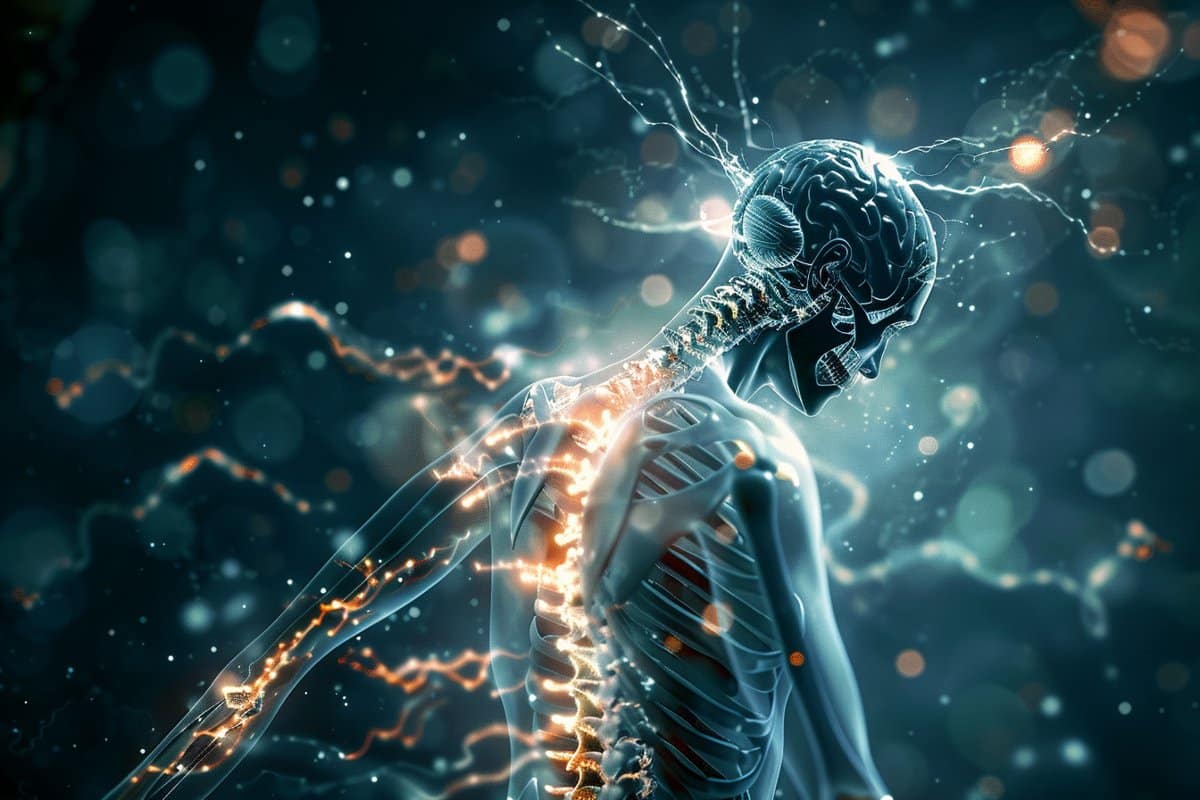Summary: The spinal cord possesses its own learning and memory capabilities, challenging the long-held view of it as merely a message relay between the brain and body. Through innovative experiments, the team identified two distinct neuronal populations that enable the spinal cord to independently adapt and remember movements.
This groundbreaking work not only provides insight into the spinal cord’s complex role in movement but also opens new avenues for rehabilitation strategies following spinal injuries. The findings highlight the potential for rethinking how movement recovery is approached in patients with spinal damage.
Key Facts:
- The spinal cord can learn and remember movements autonomously, thanks to specific dorsal and ventral neuronal populations.
- This discovery was made possible by a novel experimental setup that measures movement changes in mice, offering fresh insights into spinal cord plasticity.
- The research could have significant implications for the rehabilitation of people with spinal injuries, suggesting new methods for enhancing recovery.
Source: VIB
The role of the spinal cord is often simplified to that of a simple relay station, carrying messages between the brain and the body. However, the spinal cord can actually learn and remember movements on its own.
A team of researchers at the Leuven-based Neuro-Electronics Research Flanders (NERF) details how two different neuronal populations enable the spinal cord to adapt and recall learned behavior in a way that is completely independent of the brain.

These remarkable findings, published today in Science, shed new light on how spinal circuits might contribute to mastering and automating movement. The insights could prove relevant in the rehabilitation of people with spinal injuries.
The spinal cord’s puzzling plasticity
The spinal cord modulates and finetunes our actions and movements by integrating different sources of sensory information, and it can do so without input from the brain.
What’s more, nerve cells in the spinal cord can learn to adjust various tasks autonomously, given sufficient repetitive practice. How the spinal cord achieves this remarkable plasticity, however, has puzzled neuroscientists for decades.
One such neuroscientist is Professor Aya Takeoka. Her team at Neuro-Electronics Research Flanders (NERF, a research institute backed by imec, KU Leuven and VIB) studies how the spinal cord recovers from injuries by exploring how the nerve connections are wired, and how they function and change when we learn new movements.
“Although we have evidence of ‘learning’ within the spinal cord from experiments dating back as early as the beginning of the 20th century, the question of which neurons are involved and how they encode this learning experience has remained unanswered,” says Prof. Takeoka.
Part of the problem is the difficulty in directly measuring the activity of individual neurons in the spinal cord in animals that are not sedated but awake and moving. Takeoka’s team took advantage of a model in which animals train specific movements within minutes. In doing so, the team uncovered a cell type-specific mechanism of spinal cord learning.
Two specific neuronal cell types
To check how the spinal cord learns, doctoral researcher Simon Lavaud and his colleagues at the Takeoka lab built an experimental setup to measure changes in movement in mice, inspired by methods used in insect studies.
“We evaluated the contribution of six different neuronal populations and identified two groups of neurons, one dorsal and one ventral, that mediate motor learning.”
“These two sets of neurons take turns,” explains Lavaud. “The dorsal neurons help the spinal cord learn a new movement, while the ventral neurons help it remember and perform the movement later.”
“You can compare it to a relay race within the spinal cord. The dorsal neurons act like the first runner, passing on the critical sensory information for learning. Then, the ventral cells take the baton, ensuring the learned movement is remembered and executed smoothly.”
Learning and memory outside the brain
The detailed results, published in this week’s edition of Science, illustrate that neuronal activity in the spinal cord resembles various classical types of learning and memory. Further unravelling these learning mechanisms will be crucial, as they likely contribute to different ways in which we learn and automate movement, and may also be relevant in the context of rehabilitation, says Prof. Aya Takeoka:
“The circuits we described could provide the means for the spinal cord to contribute to movement learning and long-term motor memory, which both help us to move, not only in normal health but especially during recovery from brain or spinal cord injuries.”
Funding: The research (team) was supported by the Research Foundation Flanders (FWO), Marie Skłodowska-Curie Actions (MSCA), a Taiwan-KU Leuven PhD fellowship (P1040), and the Wings for Life Spinal Cord Research Foundation.
About this learning and memory research news
Author: India Jane Wise
Source: VIB
Contact: India Jane Wise – VIB
Image: The image is credited to Neuroscience News
Original Research: Closed access.
“Two inhibitory neuronal classes govern acquisition and recall of spinal sensorimotor adaptation” by Aya Takeoka et al. Science
Abstract
Two inhibitory neuronal classes govern acquisition and recall of spinal sensorimotor adaptation
Spinal circuits are central to movement adaptation, yet the mechanisms within the spinal cord responsible for acquiring and retaining behavior upon experience remain unclear.
Using a simple conditioning paradigm, we found that dorsal inhibitory neurons are indispensable for adapting protective limb-withdrawal behavior by regulating the transmission of a specific set of somatosensory information to enhance the saliency of conditioning cues associated with limb position.
By contrast, maintaining previously acquired motor adaptation required the ventral inhibitory Renshaw cells. Manipulating Renshaw cells does not affect the adaptation itself but flexibly alters the expression of adaptive behavior.
These findings identify a circuit basis involving two distinct populations of spinal inhibitory neurons, which enables lasting sensorimotor adaptation independently from the brain.







